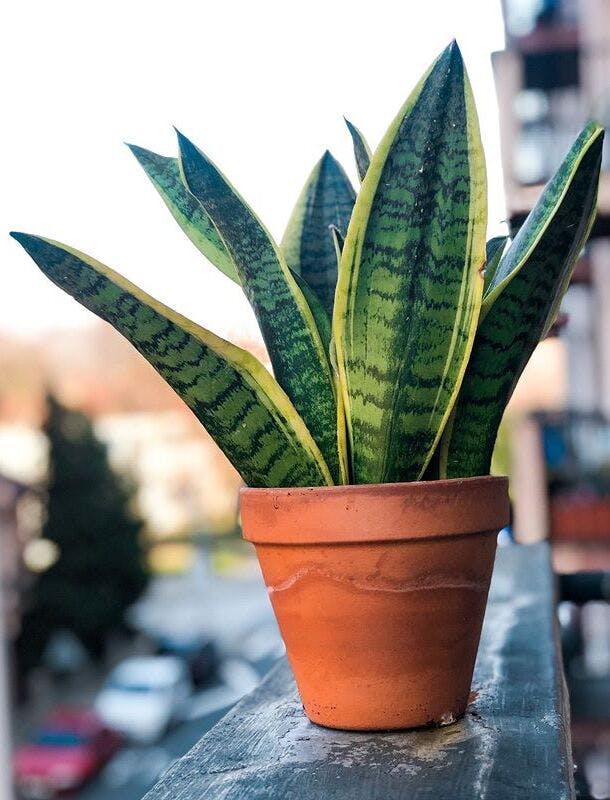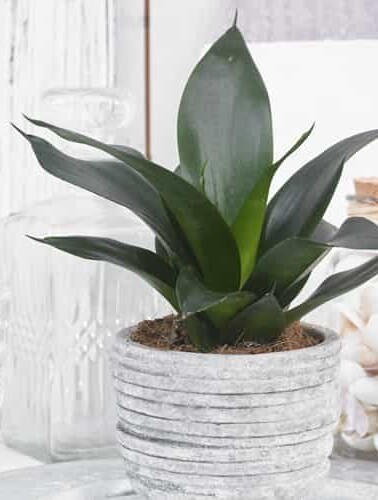Sansevieria Laurentii is the most sold variety of Sansevieria, native to Africa, and well-known for being one of the lowest maintenance and easiest plants on earth that makes it a perfect plant for beginners or for people who travels a lot.











Sansevieria Trifasciata Laurentii
- Sansevieria Trifasciata Laurentii characteristics Thrives in low lightBig leavesGood for bedroomGood for living room
Become a green thumb!

Stop suffering for your plants when you're not at home
Easy tips, adaptable systems, and detailed guides for taking care of your plants in your absence.
Sellers
Trusty stores handpicked by us

From $10.95

From $40

From $24.41

From $32.95
Know more about Sansevieria Trifasciata Laurentii
Sansevieria Trifasciata Laurentii can grow up to 1.2 meters and it's recognizable by its tight clump of dark green leaves with lighter gray-green zig-zag and yellow stripes along the margins.
Snake plants are succulents air purifiers, it means they are plants that improve the air quality by removing toxins from the air. Before having a sansevieria, make sure your cat, dog or children don't eat it because it's toxic if ingested.
Key tips for successful care
- Sansevierias are good plants for travelers and beginners
- Bedrooms and living rooms are good spots to put your Sansevieria because it removes air toxins.
- Sansevierias are mildly toxic if ingested, so put it away from cats, dogs, and children.
- For a high leaf color contrast, place it in a bright spot.
- An hour of direct sun will boost the growth. Remember to water it more often then.
- Use a pot that has good drainage, such as a terracotta pot or one made with some porous material.
Sansevieria Trifasciata Laurentii care guide
Sansevieria Trifasciata Laurentii tolerates a wide range of light - from low to high light levels, but it will be happier in bright light. When snake plants are placed in low light conditions you can't expect them to grow much, but if they do, it will be slower.
Sansevierias will love to receive direct sunlight for an hour or two, but they will request more water. Most of the sansevieria varieties and Sansevieria Laurentii are office plants because they can grow in artificial light.
Snake plants are low maintenance plants, so you won't have to do much to make them grow fast. In addition, sansevierias are drought-tolerant plants so you better be careful when watering it or you might kill them.
Like other snake plant varieties, Sansevieria Trifasciata Laurentii is a succulent so it's sensitive to water. Where they are originally from, doesn't rain much, so they have developed the capacity to store water in their leaves to survive long periods without water. As you can imagine, to water it too often would be disastrous.
Reduce the watering during winter. It's important to know that the amount of water is directly related to how much light a plant receives and how well-draining is the soil.
Sansevierias don't mind the dry air in our homes and offices. They'll also do well in bathrooms where the humidity might be much higher. Its versatility is one of the reasons for being considered a hardy plant.
An organic all-purpose houseplant food would be fine. Just be sure to fertilize in the spring and/or summer, twice at the most.
Plants you may like
See allIf you like the look of the Sansevieria Trifasciata Laurentii, you might fall in love with the following plants as well.




